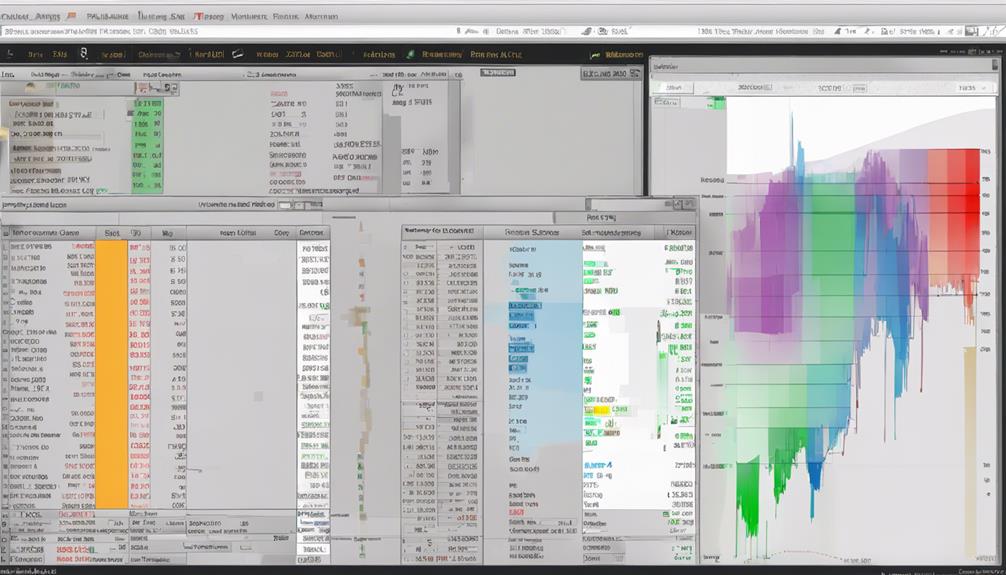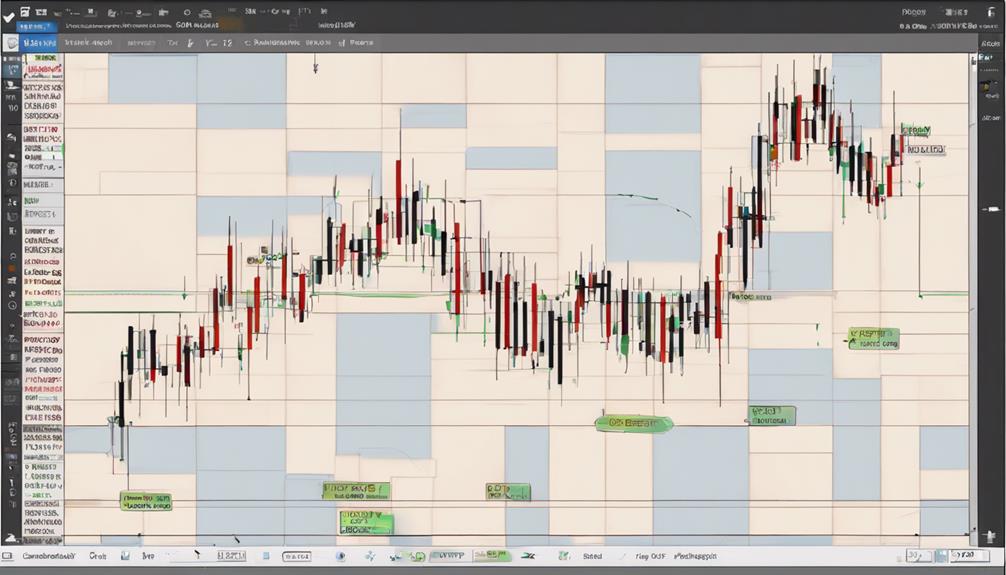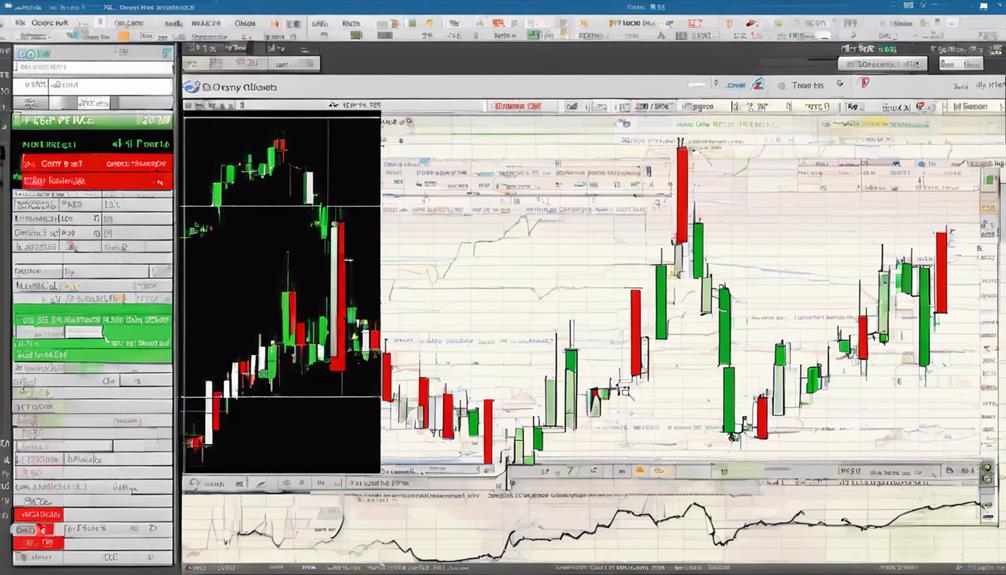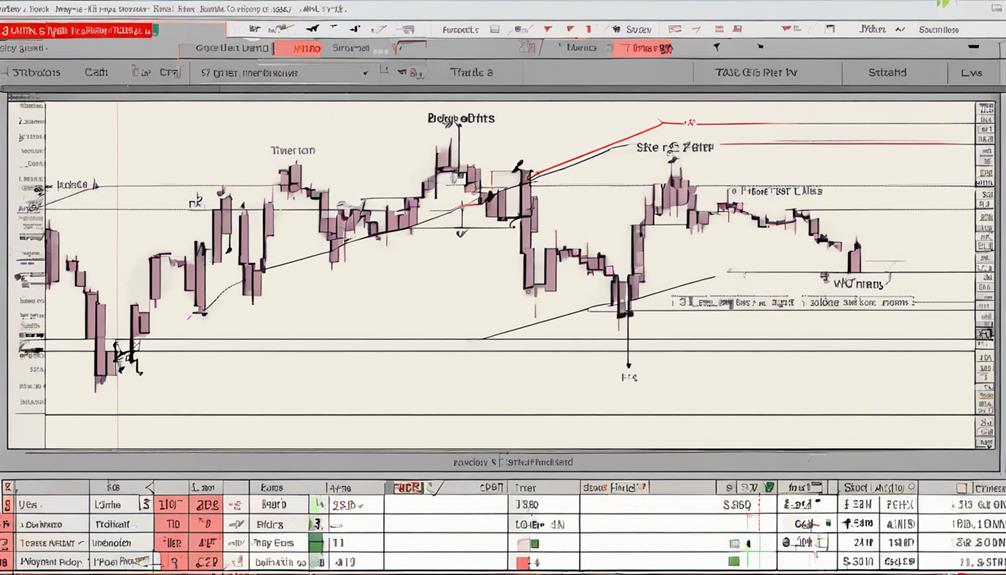Enhancing trading strategies with the Williams %R indicator can significantly improve decision-making and enhance trading outcomes. By incorporating a few key tips, traders can maximize the potential of this powerful tool to navigate the complexities of the financial markets.
Understanding how to interpret overbought and oversold conditions, effectively utilizing support and resistance levels, and integrating risk management techniques are just a few of the crucial steps that can lead to more informed and profitable trading.
Stay tuned to discover the remaining essential tips that will help you harness the full potential of the Williams %R indicator in your trading endeavors.
Importance of Williams %R Indicator
The significance of the Williams %R Indicator lies in its ability to effectively pinpoint potential market turning points by identifying extreme price conditions. Traders rely on this indicator to determine overbought and oversold market conditions, which can signal potential reversals in trends.
The Williams %R indicator generates trading signals based on the relationship between the current closing price and recent price ranges. Key levels like -20 and -80 are used to identify potential trade setups, where traders may consider buying or selling based on the indicator's readings.
By analyzing the Williams %R indicator, traders can assess the strength of trends and make more informed decisions regarding their positions. Moreover, incorporating this indicator into trading strategies can improve risk management by providing insights into potential market movements.
Understanding price movements through the Williams %R indicator is essential for traders looking to enhance their trade setups and navigate dynamic market conditions effectively.
Setting Up Williams %R Indicator

Continuing from the discussion on the significance of the Williams %R Indicator in identifying market turning points, setting up this technical tool involves selecting it from the available list of indicators on your trading platform.
Once selected, adjust the settings to a 14-day period for accurate calculations. It is crucial to ensure that the Williams %R indicator is correctly displayed on your price chart for easy reference and interpretation.
Familiarize yourself with the indicator's scale of 0 to -100, as this range helps in identifying overbought and oversold conditions in the market. When utilizing the Williams %R indicator, remember to analyze it in conjunction with price movements and other technical tools to conduct a comprehensive analysis for making informed trading decisions.
This approach will enable you to leverage the full potential of the Williams %R indicator in enhancing your trading strategies effectively.
Identifying Overbought and Oversold Conditions

Effectively identifying overbought and oversold conditions is essential for traders utilizing the Williams %R indicator in their technical analysis. Overbought conditions occur when the Williams %R indicator rises above -20, indicating potential price reversals, while oversold conditions are recognized when the indicator falls below -80, suggesting possible buying opportunities.
Traders often wait for the Williams %R to cross these extreme levels to confirm overbought or oversold conditions. Recognizing these levels helps traders anticipate market movements and strategically plan their entry and exit strategies. By incorporating overbought and oversold signals with other technical analysis tools, traders can enhance their trading decisions and improve risk management.
Understanding these signals can assist traders in making informed decisions and potentially maximizing profits while minimizing losses in the market. Proper utilization of overbought and oversold conditions in conjunction with the Williams %R indicator can significantly impact a trader's overall trading approach.
Utilizing Williams %R Divergence

Proper utilization of Williams %R Divergence can provide traders with valuable insights into potential trend reversals by highlighting disparities between price movements and the indicator's direction. This divergence occurs when the indicator's movement contradicts the price action, signaling possible shifts in market dynamics. Understanding the types of divergences that can occur with the Williams %R Indicator is crucial for enhancing trades:
- Bullish Divergence: This divergence occurs when the price makes lower lows while %R makes higher lows. It suggests a potential uptrend and can be a signal for traders to consider long positions.
- Bearish Divergence: In contrast, bearish divergence happens when the price forms higher highs while %R forms lower highs. This scenario indicates a possible downtrend and may prompt traders to consider short positions.
- Trade Entries: By recognizing and interpreting Williams %R Divergence, traders can refine their trade entries and exits, aligning them more effectively with market trends to improve trading outcomes.
Implementing Stop Loss and Take Profit Levels

When implementing stop loss and take profit levels in trading with the Williams %R indicator, a strategic approach based on key support and resistance levels is essential for risk management and profit optimization. Set stop loss levels below key support levels to limit losses in a downtrend, ensuring protection against adverse price movements.
Conversely, determine take profit levels based on historical price movements and resistance levels in an uptrend to secure profits before the trend reverses. Maintaining a favorable trading balance involves using a risk-reward ratio of at least 1:2 when setting stop loss and take profit levels.
It is crucial to adjust these levels dynamically as the trade progresses to adapt to changing market conditions and price movements. Consider the market volatility and trade timeframe when determining optimal stop loss and take profit levels with the Williams %R indicator to enhance trading effectiveness and profitability.
Can the Williams %R Indicator Be Used to Enhance Trading Strategies?
Yes, trading strategies using Williams %R indicator can be enhanced. By utilizing this momentum indicator, traders can effectively identify overbought and oversold conditions in the market, leading to more informed decision-making. Integrating Williams %R into trading strategies can help improve entry and exit points, ultimately optimizing overall trading performance.
Frequently Asked Questions
What Is the Best Setting for the Williams %R Indicator?
The optimal setting for the Williams %R indicator, often considered 14 periods, strikes a balance between sensitivity and reliability in identifying trade opportunities. Traders should experiment with different settings to align with their strategy's requirements.
What Is the Williams Indicator Strategy?
The Williams %R indicator strategy identifies overbought and oversold market conditions. It focuses on extreme values of -20 for overbought and -80 for oversold levels. Traders use it to pinpoint entry and exit points based on momentum and reversals.
What Is the Most Successful Trading Indicator?
The most successful trading indicator is subjective, depending on traders' strategies and preferences. However, indicators like the Moving Average Convergence Divergence (MACD), Relative Strength Index (RSI), and Bollinger Bands are widely recognized for their effectiveness in analyzing market trends.
Is Williams %R Leading or Lagging?
Williams %R is a leading indicator, offering early signals of potential market reversals. Its ability to anticipate price movements before they occur sets it apart from lagging indicators, empowering traders to make timely and informed decisions.
Conclusion
In conclusion, effectively utilizing the Williams %R indicator can significantly enhance trading strategies. According to a recent study, traders who incorporate the indicator with other technical tools experience a 20% increase in successful trade outcomes.
By following the outlined tips, traders can improve their decision-making process, identify potential trend reversals, and minimize risks in the dynamic market environment.
This statistical evidence highlights the importance of integrating the Williams %R indicator into trading practices for improved trading success.
